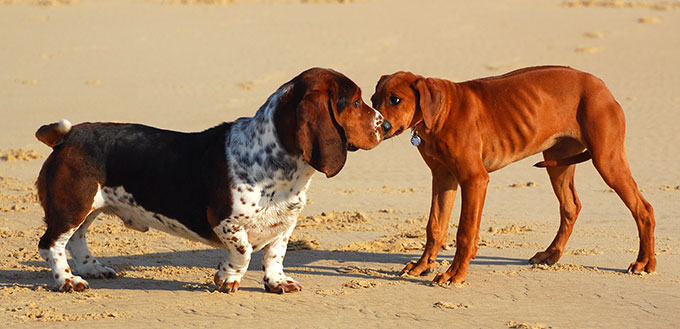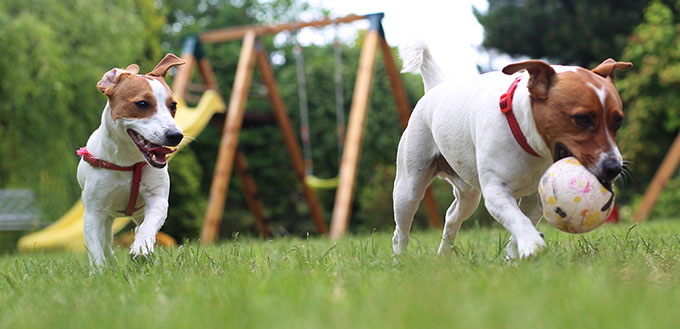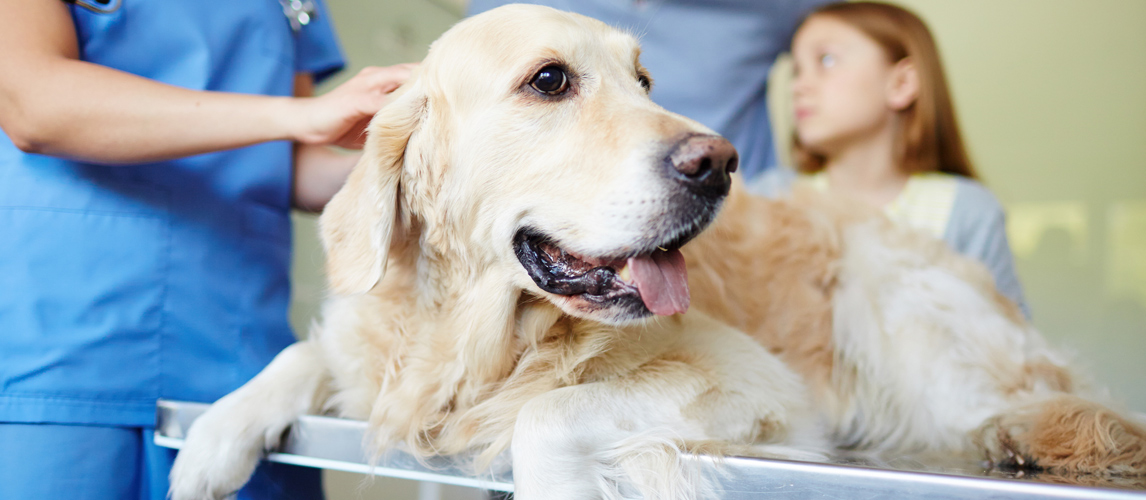Your dog probably likes to make friends. Whether on a walk, at the vet, or at a doggie boarding house, most dogs enjoy socializing and playing with other dogs. But, have you ever noticed them gravitate towards their own breed? Many owners, particularly of pure breeds, report that their Doberman likes to make friends with other Dobermans, or that their chihuahua prefers other chihuahuas. This makes many owners think that dogs can recognize when they meet their own breeds, but is this true? Or is something else at play?
Related Posts: Dog Food for Dobermans and Dog Food for Chihuahuas

Recognizing Each Other
Intelligence is a complicated thing to measure, so most animal scientists focus on specific indicators, rather than attempting formal IQ tests and written exams. Examples of types of dog intelligence that researchers have tried to study include:
- How good dogs are at being trained
- The extent of their memory skills
- How they understand and follow social cues and body language
- To what extent they can understand verbal language
Generally, dogs have proven themselves to be much more intelligent than we expect. They can be trained fairly easily, they are very perceptive to our emotions and body language, and they can even learn up to 200 words. One dog has even been able to memorize a vocabulary of about 1000 words!
Recognition could be considered another aspect of intelligence that can be studied, and in this measure, dogs have mixed results. Research has proven that dogs can recognize each other as a species. Regardless of the size, ear shapes, coats, and tails, a dog can tell when they are looking at a photo of another dog.
A key piece of research that proved this used 3,000 photos of dogs and 3,000 photos of other animals and trained dogs to choose between 144 pairs of these photos. Using rewards for choosing the photos of dogs, the researchers demonstrated to the dogs that choosing their own species was preferable. The dogs clearly demonstrated that they could tell the difference between dogs and non-dogs by consistently choosing the photos of the dogs.
Recognizing Dog Breeds
So, clearly, dogs can tell the difference between dogs and other animals, but can they go one step further and recognize their own breed? This is, unfortunately, where they fall short. There are around 400 or 500 dog breeds and there is no evidence to suggest that dogs can tell the difference between them.
It makes sense when you think about it. After all, it can be pretty hard for humans to tell the difference between breeds, particularly if they aren’t pure breeds. Mixed breeds and crossbreeds can have features of multiple breeds. Also, new breeds are being bred or discovered all the time, which is why it can be so difficult to pin down exactly how many breeds there are. Ultimately, it is not very likely that a dog will be able to differentiate breeds by sight if humans can’t.
Let’s remember to keep this inability in perspective, though. Even though dogs cannot recognize their own breed, being able to discern their species is extremely impressive. Dogs vary so much in their physical characteristics, it is amazing that a poodle can tell that they are the same species as a bulldog and a St. Bernard.
The truth is that dog owners tend to inaccurately prescribe their dogs with human traits, also known as anthropomorphism. Rather than focusing on human explanations, dog owners should try to think like a dog when they encounter interesting behavior from their pets. There are lots of reasons your dog may be being friendly with another dog, and you can’t make any assumptions.
This may feel like an unsatisfying conclusion, but it is the best we can say considering the current evidence we have. It is worth noting, however, that there has not been that much research into how dogs differentiate between breeds and how they may recognize each other. It is possible that dogs do have more of an understanding of their breeds than we currently think.
Breeds and Communication
The lack of research about dog breed recognition makes understanding dog behavior a little difficult. Many owners swear that their dogs prefer making friends with other dogs of the same breed. Luckily, although we don’t think it is because dogs genuinely have a breed preference, scientists have found an answer.
Dogs are thought to gravitate towards other dogs with similar communication and social skills. As much of a dog’s communication skill relies on their face, it is thought that dogs with similar face shapes gravitate towards each other.
Researchers have suggested that there is a difference between the number of social signals that breeds have in their faces, and this could also impact their ability to communicate. It is possible that conflict also arises from these differences. When a German shepherd tries to communicate with a Boston terrier, for example, tempers may flair when they struggle to understand each other.
You may also like our articles on Dog Food for German Shepherds and Dog Food for Boston Terriers.
Compare pugs, for example, with Labradors. Labradors have long, gentle noses, while pugs are brachycephalic, which is the term for being flat-faced. It is thought that, when given the choice, the Labrador will go to socialize with another Labrador, rather than a pug, because it recognizes their facial communication and social skills. A pug will likely also turn to another pug, or another brachycephalic dog like a Boston terrier before they consider the Labrador.
Check out our guides on the Best Dog Food for Labs and Dog Food for Pugs for more info.

The Final Say
Dogs probably don’t recognize their own breeds, or perhaps any breed. But they are certainly very intelligent animals who can recognize their own species and have keen communication skills. That being said, there is still so much that we don’t understand about dog behavior.
While we should be careful not to prescribe our human explanations to our dogs, there has been very little research on dogs’ perceptions of breed. More research is being done all the time on animal intelligence and behavior, so, hopefully, further research will allow us to provide a better answer in the future.







Oh they do!! My Greyhound recognises other Sighthounds straight away and does a little “dance” of excitement!!